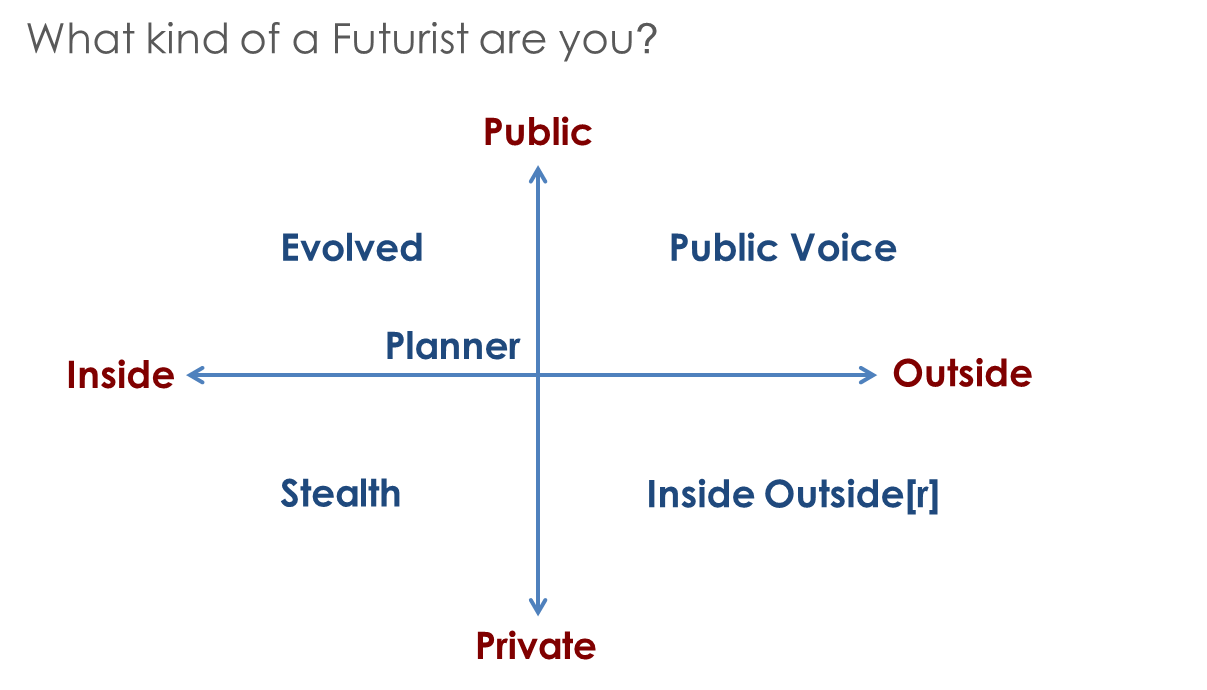I was glancing through the posts to our Futurists in Media project, and I noticed the strong presence of two organizational futurists: Ray Kurzweil of Google and Sheryl Connelly of Ford.
 It reminded me of the second question on the Organizational Futurists Audit: What is your positioning? Way back in the early 2000s when we first put this together, I would often comment that the public voice positioning was both the most exalted…..and the rarest. At the time, Ian Pearson of BT was the only example we could find. The basic idea of the public voice is a thought leadership positioning in which the organization’s view of the future is publicly shared and promoted as a way to build support for it. Back in the early 2000s, however, many if not most of internal futurists were in stealth mode.
It reminded me of the second question on the Organizational Futurists Audit: What is your positioning? Way back in the early 2000s when we first put this together, I would often comment that the public voice positioning was both the most exalted…..and the rarest. At the time, Ian Pearson of BT was the only example we could find. The basic idea of the public voice is a thought leadership positioning in which the organization’s view of the future is publicly shared and promoted as a way to build support for it. Back in the early 2000s, however, many if not most of internal futurists were in stealth mode.
Is that changing? In addition to Google and Ford, in looking over the last year’s scanning we see:
- Futurist Brian David Johnson, formerly of Intel, where he actively and publicly promoted a vision of the future, moved on to become the futurist-in-residence for the Center for Science and the Imagination at Arizona State University
- Gen. H.R. McMaster is called the Army’s charismatic chief futurist
- Concordia’s Institute for Urban Futures announced two Futurists-in-Residence: Jonathan Lapalme and Mallory Wilson
- Sci Fi author Neal Stephenson was dubbed Magic Leap’s chief futurist.
- And 20th Century Fox claims Ted Schilowitz as their technology futurist
It’s not yet clear how public these roles will play out. But I find that fact that they are emerging to be very encouraging. Andy Hines

Leave a Reply